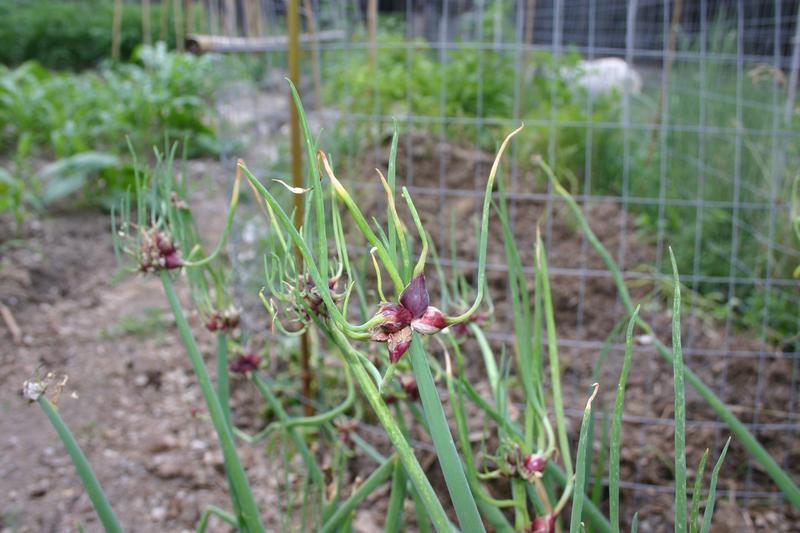Walking Onions
aka
Egyptian Onions
At the end of my last post I said I would do another posting on how lettuce is grown in the desert.
I think I will postpone that - didn't seem to be much response for readers. So, I offer this instead.
About 70 years ago, my Grandfather was probably growing these onions. I don't remember it very clearly, but he grew huge leeks, blue potatoes and lots of other terrific veggies. When I started my own garden (much much later in life) I obtained some of his strange onions.
As grampa was born in Belgium, I always thought they were Belgian onions. Much to my surprise I found out different. Mind you, I hate to admit how many years I gave away "babies" all the while telling people they were Belgian onions. Wrong!
Not many years ago I finally found out they are Egyptian Onions, also known as Walking Onions.
Live and learn! And to my surprise I find Wikipedia refers to them as "Egyptian Tree Onions".

This view of them kind of says it all. Instead of setting seeds on the top of the stalks, they form a clump of small onions. Bulblets?

No matter what you call them, they are very interesting to grow. As you can see from this picture the bulblets/babies/sets (whatever!) grow at the top of the stem, then often send another shoot out and form a second set of "baby onions".
So - now you are probably wondering what possible use these onions can be other than a good way to start a conversation when showing off your garden.
When the bulblets have formed in late summer, you can harvest them. I think you might have a problem with trying to peel them to cook as they don't get very big. The largest are sometimes the size of a penny, but many are the size of peas or smaller. In the fall the main plant stems with the bulblets will die back, letting the bulblet cluster land on the ground. Hence the term "Walking Onions" as they sort of walk away from the main plant, and when they land on the ground they will root and develop into a cluster of new young onions. It might be spring when you notice them doing this. The best way is to pick them as the stems start wilting and you can store them in a cool dry place and plant them very early . OR as a better alternative you can separate them and plant them in late summer. Make sure the "pointy end"is up,of course, and don't cover them with dirt but just put them sort of half way into the ground. They will sprout and be rooted and ready to go very quickly. This gives you green onions much quicker than planting seeds.
One nice thing about these onions is they are very hardy. They survived sub-zero weather in the Interior of B.C. (Quesnel) and didn't seem to suffer a bit.
When you plant a bulblet you can either used it as a green onion or leave it to mature into a large hardy plant. After the first year it will start to send up shoots around the main little bulb and then you will have a larger number of "main shoots" to produce little bulblets.
So - my Grampa's onions are now spread all over the place. I used to have a lot of large plants and passed them along through "Cowichan Re-Cycle". I am sure he would be pleased to know his plants have survived the generations and are going strong.
If you want more information there a lots of images on the internet and if you just want to tell me if you have these and enjoy them, I would be happy to chat or exchange e-mails.
GG
No comments:
Post a Comment